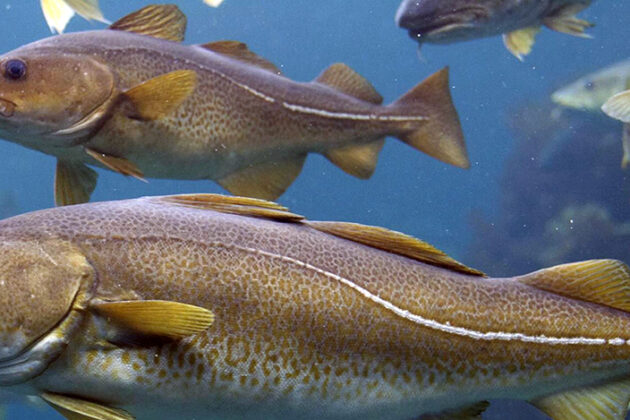Atlantic and Arctic cod are the climate refugees of the sea

Climate change forces cod to migrate further north, which might drastically reduce their populations over the course of this century, new research shows.
If Paris Agreement targets are not met, temperature increase and ocean acidification will cause the Atlantic cod to be driven further north to find suitable spawning conditions with temperatures between 3–7 degrees.
This is because cod embryos, i.e. fertilized eggs, are very sensitive to temperature. Even a slight increase in ocean temperatures can result in eggs dying or deformed larvae. Acidification exacerbates the situation further. Arctic cod will suffer the same fate.
These are among the findings presented in a scientific article written by scientists at the German Alfred Wegener Institute, published in the prestigious journal Science Advances.
Aquaculture station used for climate research
The research was carried out at Nofima’s Centre for Marine Aquaculture at Kraknes, just outside of Tromsø. Senior scientists Atle Mortensen and Velmurugu Puvanendran from Nofima’s national cod breeding programme are listed as co-authors of the published article.
Mortensen explains that Nofima put their facilities at the scientists’ disposal and assisted during the planning and execution of the research project. The Germans were made aware of the opportunity to climate test cod larvae at Kraknes through the EU-funded AquaExcel network.
“Through more than 15 years of cod breeding, we have developed systems and routines that make producing larvae without significant variations in size or mortality possible. This is an important prerequisite for this type of research, where too much variation in the specimens can cancel out results.

Lofoten fishery can be affected
Mortensen says the coastal fisheries in North Norway will alter if climate change continues unchecked.
“For example, the Lofoten fishery can be affected as the migration pattern of spawning skrei becomes more unpredictable as the fish go further north and end up in areas with different ocean currents”, he says.
Even though migrating skrei and coastal cod are able to find and adapt to new areas, the prospects for Arctic cod survival, on the other hand, are not cheerful.
“A more precarious situation”
Arctic cod is common in the Arctic Ocean and in the Svalbard region. In order to spawn, it ideally requires temperatures of 0.5–1.5 degrees.
“Arctic cod is in the most precarious situation. It is already about as far north as it can possibly go”, says Mortensen.
He explains that even though there is little commercial fishing for Arctic cod, the species is integral to the Arctic ecosystem as a food source for both seals and seabirds.
Acidification makes it all worse
In the Arctic waters further north, the various species of cod will come up against yet another result of climate change, namely ocean acidification.
Ocean acidification occurs when excessive amounts of carbon dioxide (CO2) dissolve in water and form carbonic acid. The more CO2 is emitted into the atmosphere, the more CO2 is dissolved in the ocean. The result is more acidic oceans.
Experiments carried out at Nofima’s facilities showed that a more acidic ocean will have detrimental effects on the embryonic developments of cod. The number of fertilized eggs that fail to survive increases by 20–30% with a pH level of 7.7, even at optimum temperatures. Current pH levels in the sea are at around 8.0.
A failure to bring about significant reductions in CO2 emissions will deteriorate conditions for young Atlantic cod near the end of this century. This may have fatal consequences for Norwegian fisheries.
“In the regions around Norway and Iceland, up to 60 percent fewer cod larvae will hatch from their eggs”, scientist Flemming Dahlke states in an AWI press release.
Contact person
Research facilities
Tromsø Aquaculture Research Station
Projects
